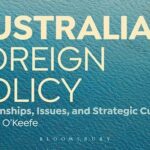It’s time to close the dairy loophole
Unlike animals sent overseas to be slaughtered for their meat, those exported for breeding purposes are not protected by the Government. Eleanor Nurse from Voiceless says it’s time to end the cruel live export trade in dairy cows.
There is a gaping hole in Australia’s live export regulations, and every year 90,000 dairy cows are allowed to slip right through it.
These animals are falling into a ‘live export loophole’ and are being shipped to foreign markets where they are afforded zero legal protection under Australian law.
Most Australian animals who are exported live are ‘protected’ by the Exporter Supply Chain Assurance System (ESCAS). In theory, ESCAS requires exporters to declare to the Australian Government that they can account for their animals throughout the supply chain up to the moment they are slaughtered.
While these rules apply to animals who are sent overseas to be slaughtered for their meat, animals who are exported for breeding purposes are expressly exempt from ESCAS. This means that once dairy cows have disembarked, there is no obligation on exporters to ensure their welfare or the welfare of their calves.
In the live export trade, we have witnessed unimaginable cruelty being inflicted on animals who are ‘protected’ by ESCAS. Who knows what is happening to the animals who fall through this legislative gap?
Considering 85% of Australian dairy cows are sent to China, conditions there offer us a glimpse at what life is like once they leave our shores. Much of the Chinese dairy market is supplied by intensive production facilities where cows are permanently confined indoors on hard concrete surfaces and fed unnatural diets, making them highly susceptible to painful chronic diseases like lameness and mastitis.
Compare that to dairy production here in Australia, which is mostly pasture-based, enabling cows to have access to open ranges and to naturally feed on grass.
Worse still, when we export dairy cows we are sending them and their calves to a completely uncertain death. Most dairy cows are sent to slaughter at the end of their productive lives, or once they are deemed ‘spent’, and cannot produce enough milk to make them economically viable to feed.
Again, while the slaughter of animals who are used for meat is ‘regulated’ by ESCAS, dairy cows don’t enjoy this same protection, leaving them at heightened risk of a cruel slaughter.
In 2013, a government review agreed that animals who are exported for breeding purposes were at risk of poor husbandry practices and inhumane slaughter. Despite this, the review also decided that these risks didn’t warrant the difficult job of maintaining oversight of these animals, who are often transported and sold in various locations and changed hands multiple time over their lives.
In short, the review concluded that it would be ‘too hard’ to protect Australian dairy cows and their calves overseas. Real commitment to animal welfare means protecting them always, not just when it is convenient and easy to do so.
Voiceless has just launched a national campaign to close the dairy loophole. Already over 3500 compassionate Australians have signed our petition demanding an end to the live export trade in dairy cows.
Learn more about the campaign and add your voice at www.voiceless.org.au/dairyloophole
Eleanor Nurse is Communications Officer of Voiceless, the animal protection institute.










